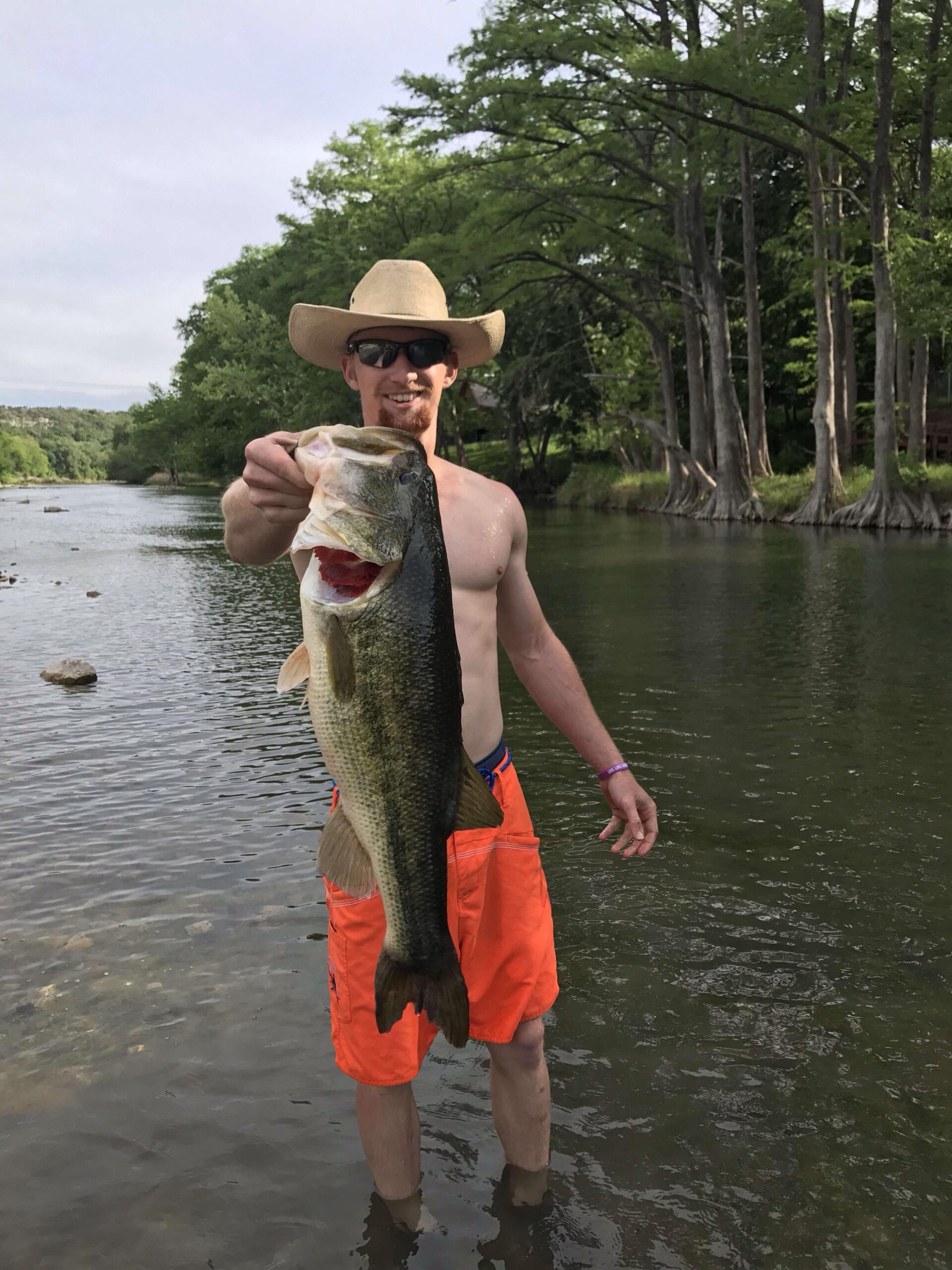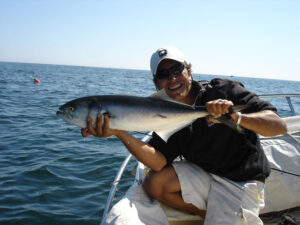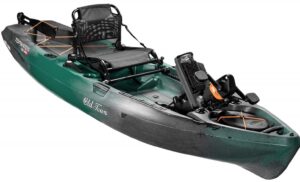When it comes to fishing, bass is one of the most sought-after freshwater fish species. Anglers from all over the world immerse themselves in the thrill of catching bass, and river fishing for bass adds an extra element of excitement. In this article, we will delve into the world of river fishing bass, exploring various tips, techniques, and fun facts that will help you become a skilled and successful bass angler. So, grab your fishing gear and let’s dive in!
1. Understanding the Habitat and Behavior of Bass
Before we embark on our river fishing adventure, it’s essential to understand the habitat and behavior of bass. Bass are known to seek shelter in various structures, such as submerged logs, rocks, and vegetation, where they hide and ambush their prey. They are also highly territorial, with each bass claiming its own feeding area. By studying the river’s structure, flow, and vegetation, you can identify potential hotspots where bass are likely to congregate.
2. Selecting the Right Fishing Gear
Choosing the right fishing gear is crucial for a successful river fishing bass expedition. Here are some key considerations:
- Rods: Opt for medium to medium-heavy spinning or casting rods, depending on your preference and fishing style.
- Reels: Match your rod with a quality reel that offers smooth drag and sufficient line capacity.
- Lines: Use a braided or fluorocarbon line with a test strength of around 10 to 20 pounds for better sensitivity and control.
- Baits and Lures: Carry a variety of baits and lures, including plastic worms, crankbaits, spinnerbaits, and topwater lures, to adapt to different fishing conditions.
- Terminal Tackle: Stock up on hooks, weights, and swivels of various sizes to suit your fishing techniques.
3. Mastering Different Techniques
When it comes to river fishing bass, employing various techniques can significantly increase your chances of landing a big catch. Here are some techniques to consider:
3.1. Texas Rig
The Texas rig is a versatile and effective technique for fishing bass in rivers. It involves rigging a soft plastic worm or creature bait weedless, allowing you to cast into areas with heavy cover without snagging. Use an offset worm hook and slide a bullet-shaped weight onto the line before tying the hook.
3.2. Topwater Fishing
There’s nothing quite as exhilarating as witnessing a bass explode on a topwater lure. Topwater fishing involves using lures that float on the water’s surface, mimicking injured prey and attracting bass. Experiment with buzzbaits, poppers, and frog imitations for exciting topwater action.
3.3. Crankbait Retrieval
Crankbaits are excellent lures for covering large areas of water quickly. To entice bass, vary your crankbait retrieval speed, imitating the movement of injured or fleeing prey. Start with a steady retrieve and experiment with pauses, jerks, and speed changes to find the most effective presentation.
4. Understanding River Currents
River currents play a significant role in bass fishing, impacting their feeding patterns and hiding spots. Understanding the behavior of bass in relation to currents can give you a strategic advantage. Here are some insights:
- Bass often position themselves behind rocks or other structures to conserve energy and wait for prey to be swept past them by the current.
- Target areas where the current slows down, creating eddies or pockets where bass may be lurking.
- Use heavier weights or specialized techniques like Carolina rigging to keep your bait close to the bottom and prevent it from being carried away by the current.
5. The Best Time to Fish for Bass
Timing is crucial when it comes to bass fishing, and rivers have their own unique patterns. Here are some tips on the best time to fish for bass in rivers:
- Early Morning: Bass are often more active during the early morning hours when the water is cooler. Take advantage of this feeding window by casting topwater lures near cover and structure.
- Cloudy Days: Bass tend to be more active and less wary on cloudy days. Use this to your advantage by fishing in shallow areas with a variety of lures.
- Seasonal Patterns: Pay attention to seasonal changes, as bass behavior and feeding patterns vary throughout the year. During spring and fall, bass are more active and tend to move into shallower waters.
6. Catch and Release for Conservation
Conservation plays a vital role in ensuring the sustainability of bass populations in rivers. Practice catch and release techniques to minimize the impact on the fishery. Here are some catch and release tips:
- Handle the fish gently, using wet hands or a landing net to avoid removing their protective slime.
- Use barbless hooks or flatten the barbs to make hook removal easier and reduce injury to the fish.
- Release the fish quickly and support it in the water until it swims away on its own.
7. Fun Facts about Bass
As we wrap up our exploration of river fishing bass, let’s dive into some fun and interesting facts about this incredible species:
- Bass are known for their aggressive nature and powerful strikes, making them a thrill to catch.
- The world record for the largest bass ever caught is a whopping 22 pounds and 4 ounces.
- Bass have an incredible sense of hearing and can detect sounds as low as 20 hertz.
- They have a keen sense of sight and can see colors, which explains their preference for brightly colored lures.
- Bass are not only popular among anglers but also highly valued in the culinary world for their delicious taste.
Conclusion
River fishing for bass is an exhilarating experience that combines the thrill of fishing with the beauty of nature. By understanding the habitat and behavior of bass, selecting the right fishing gear, mastering different techniques, and considering river currents and optimal fishing times, you can increase your chances of success. Remember to practice catch and release techniques to preserve bass populations for future generations. So, grab your fishing rod, head to the nearest river, and get ready for an adventure-filled day of bass fishing!
FAQs about River Fishing Bass
1. What is the best bait for river fishing bass?
The best bait for river fishing bass depends on various factors, including the season, water conditions, and the bass’s feeding behavior. However, plastic worms, crankbaits, and spinnerbaits are popular and effective choices for catching bass in rivers.
2. How do I locate bass in a river?
To locate bass in a river, look for areas with submerged structures, such as logs, rocks, and vegetation, as bass often use these as hiding spots. Additionally, pay attention to changes in the river’s flow and target areas where the current slows down, creating eddies or pockets where bass may be present.
3. What is the best time of year to fish for bass in rivers?
The best time of year to fish for bass in rivers is during the spring and fall seasons when bass are more active and tend to move into shallower waters. However, bass can be caught year-round, so don’t be discouraged from fishing in other seasons.
4. Can I use live bait for river fishing bass?
Yes, live bait can be effective for river fishing bass. Popular live baits include nightcrawlers, minnows, and crayfish. However, make sure to check and comply with local fishing regulations regarding the use of live bait.
5. Are there any safety precautions I should take when river fishing for bass?
When river fishing for bass, it’s important to prioritize safety. Wear a personal flotation device (PFD) or a life jacket, especially if you’re fishing from a boat or wading in deeper water. Be cautious of slippery rocks and fast currents, and always inform someone about your fishing plans and expected return time.
Summary
River fishing bass offers an exciting and rewarding experience for anglers of all skill levels. By understanding the habitat and behavior of bass, selecting the right gear, mastering various techniques, and considering river currents and optimal fishing times, you can increase your chances of success. Remember to practice catch and release techniques for the conservation of bass populations. So, grab your fishing gear, head to the nearest river, and enjoy the thrill of hooking a bass!





